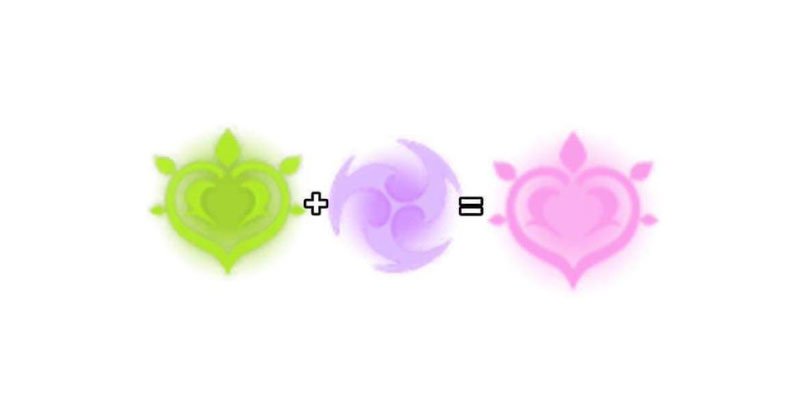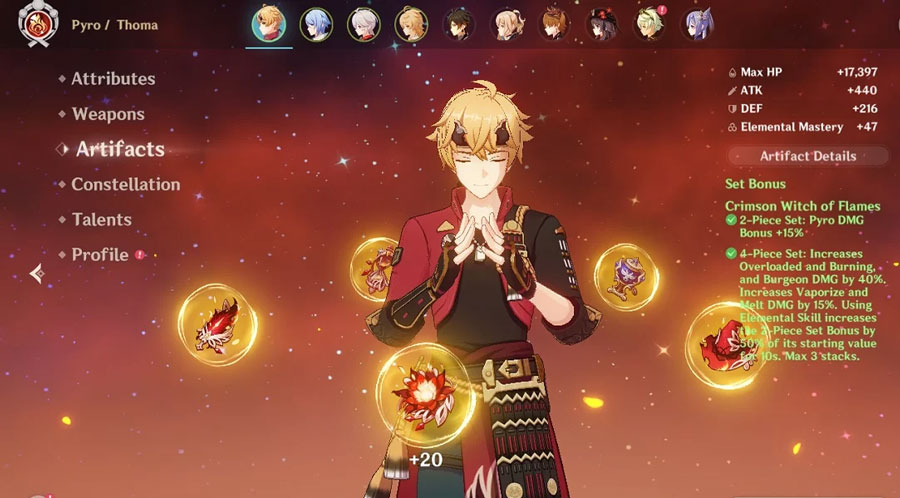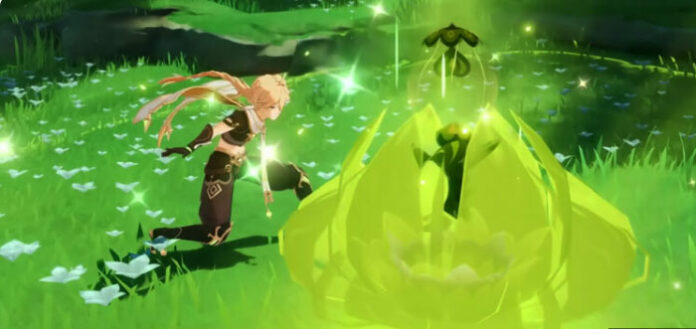In Genshin Impact version 3.0, the much-anticipated Dendro element was finally unveiled, along with the introduction of the Sumeru region as its home. Given its novelty, many players may need to familiarize themselves with this elemental addition. Here, we concisely overview the Dendro element’s mechanics and elemental interactions.
Understanding Dendro Elements
The Dendro element functions as an aura element, capable of being applied to both characters and adversaries. It can also act as a trigger, leading to various elemental reactions. Unlike Anemo and Geo, which are solely trigger elements, Dendro resembles Pyro, Hydro, Electro, and Cryo elements. However, as of version 3.0, Dendro cannot interact with Cryo, Anemo, or Geo elements.
There are two indicators to identify a unit affected by the Dendro element: a Dendro icon near the HP bar and the appearance of leaves on the team, which is crucial for the Quicken reaction, as explained later.
Elemental Resonance
When you assemble a team with two or more Dendro characters, Dendro Resonance activates. To trigger Elemental Resonance, you must have a team of four characters. In essence, the effects are as follows:
- +50 Elemental Mastery for one team.
- After initiating Dendro’s primary reaction (Burning, Quicken, or Bloom), +30 Elemental Mastery for 6 seconds.
- After initiating a Dendro sub-reaction (Aggravate, Spread, Hyperbloom, or Burgeon), +20 Elemental Mastery for 6 seconds.
The duration of the Elemental Mastery buff from elemental reactions is calculated separately. Since all Dendro responses rely heavily on the Elemental Mastery stat, Dendro Resonance significantly enhances the performance of player characters, aiming to maximize Dendro reactions.
Dendro Elemental Reactions
Understanding Dendro element reactions can be daunting due to the new terminology involved. There are various ways to trigger these reactions, as detailed below:
1. Burning (Dendro & Pyro)

This reaction, present since Genshin Impact version 1.0 but fully utilized in version 3.0, occurs when Dendro and Pyro elements combine. Unlike aura and trigger elements, Burning does not require a sequence of mana elements, making it relatively straightforward.
As the name suggests, it inflicts continuous Pyro damage (DoT) on the target. Additionally, the affected unit gains a persistent Pyro aura. If a team under the influence of Burning strikes another, that unit will acquire a Pyro aura (not Burning). Burning is considered a Transformative Reaction, with damage determined by Elemental Mastery and the character’s level.
2. Catalyze (Dendro & Electro)

Catalyze arises from the interaction of Dendro and Electro elements, resulting in a debuff called Quicken. Quicken enhances Electro and Dendro damage inflicted on affected units. It is represented by a light green lightning/electricity visual effect.
While in the quickened state, the unit also gains a Dendro aura. Should the yellow electric visual shift to leaves, it signifies Quicken’s expiration. The duration of Quicken cannot be extended, necessitating the use of Dendro and Electro elements when it wears off.
Sub-Reactions:
- Aggravate: Occurs when a unit under Quicken sustains Electro damage.
- Spread: This occurs when a team under Quicken sustains Dendro damage.
These reactions share the same damage calculation principles, differing only in the elements strengthened through Quicken. Both are considered Multiplicative Reactions, incorporating EM, base damage, Crit Rate, Crit DMG, and DMG% in their calculations.
3. Bloom (Dendro & Hydro)

Bloom is a reaction involving Dendro and Hydro elements and introduces reaction levels. When a Bloom reaction is initiated, a Seed materializes near the unit. If left untouched for 6 seconds, the Seed explodes, dealing area Dendro damage to nearby enemies and player characters. The damage calculation hinges on EM and the triggering character’s level.
A maximum of five Seeds can exist in the area, with the oldest Seed detonating if the limit is exceeded. Seeds are regarded as objects and can be manipulated by specific character skills, such as Venti or Kazuha.
Sub-Reactions:
- Burgeon: Occurs when a Seed interacts with Pyro.
- Hyperbloom: Occurs when a Seed interacts with Electro.
Burgeon and Hyperbloom are Transformative Reactions, with damage calculated based solely on Elemental Mastery and character level.
4. Burgeon (Seed + Pyro)

When a Seed collides with the Pyro element, a Burgeon reaction takes place. This causes the Seed to explode, dealing Dendro damage to nearby enemies. Unlike the Overload reaction (Pyro & Electro), Burgeon’s explosion doesn’t push enemies away. Characters near the explosion can sustain damage, with the calculation based on the Pyro character’s stats that triggered the reaction.
5. Hyperbloom (Seed + Electro)

Hyperbloom occurs when a Seed encounters the Electro element. This reaction causes the Seed to explode and become a shot targeting an enemy. The damage inflicted is Dendro damage, which doesn’t harm the player’s character. The damage calculation is rooted in the stats of the triggering Electro character.
In conclusion, this article has provided a simplified explanation of the Dendro element and its interactions with Genshin Impact. We hope this guide helps players explore the game’s potential further. If you wish to enhance your Genshin Impact experience, you can top up Genshin Impact account on UniPin now!

